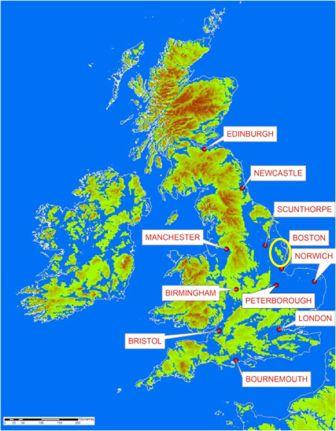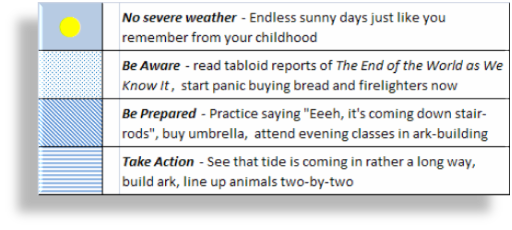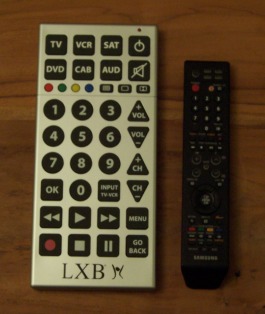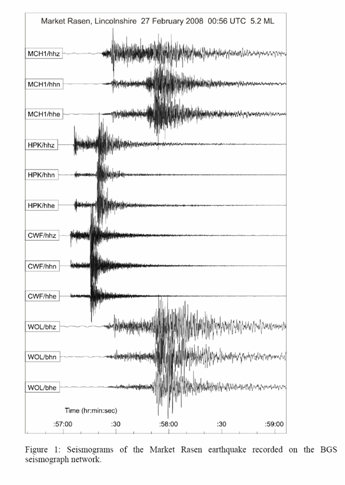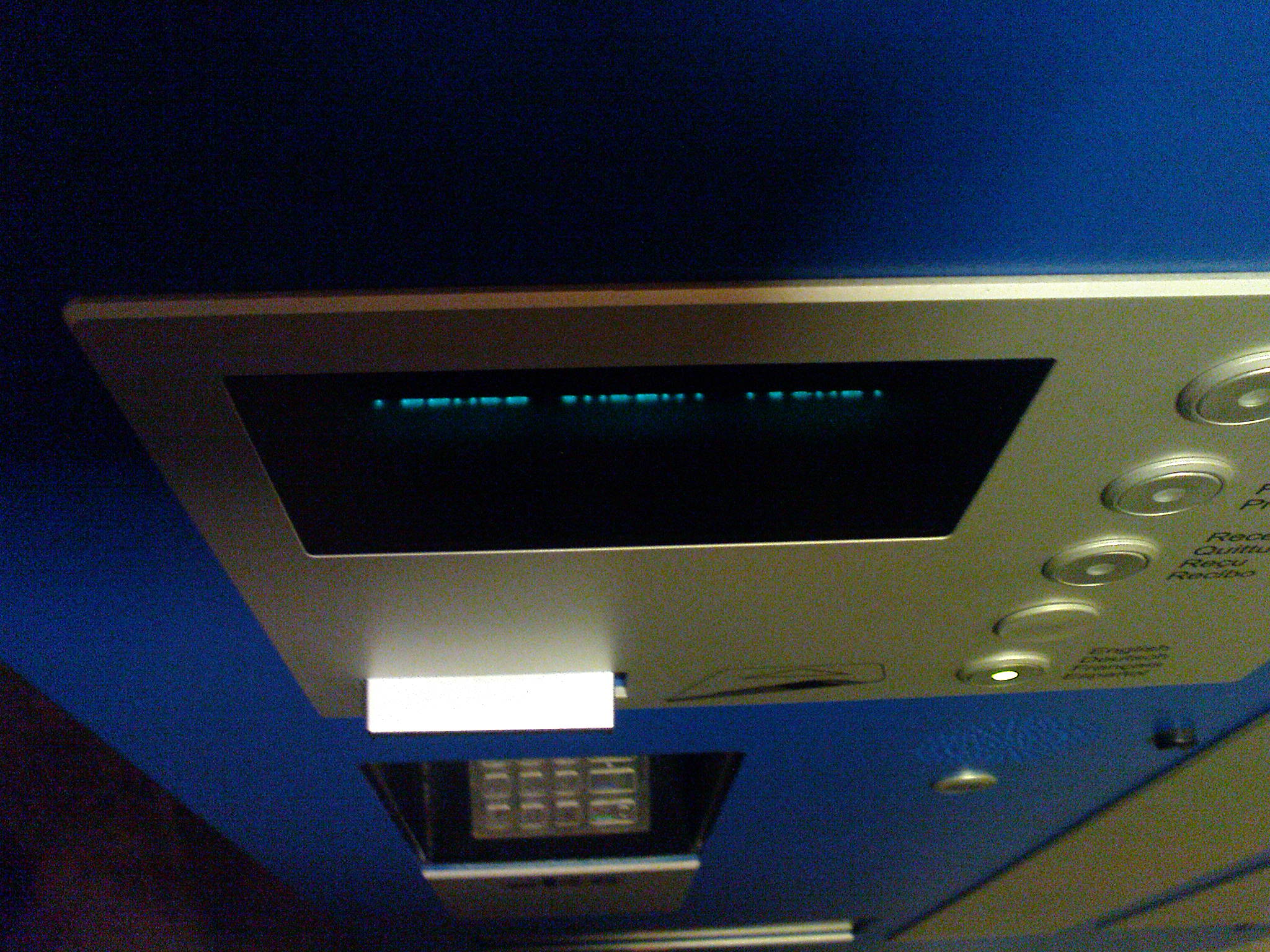They let me out for a short trip to the shops today, and whilst I was waiting to pay, I watched an old geezer struggling to put his chip'n'pin card in the right way round. Which set me off thinking about what happens when you get old, and at what point does the pace of technology evolution overtake and you are left in the dust, a crumbly, fumbling, useless old curmudgeon, no longer able to function properly nor interact sensibly with the environment.
To further the analysis we can consider this table of the evolution of user interfaces (keeping a fairly tight scope to cover mainly electronic means)…
Primary Mode
of Interaction |
Examples |
Era of invention |
| Tap |
Telegraph key (button) |
Late Georgian |
| Shout |
Candlestick phone |
Victorian |
| Rotate |
Rotary phone, Wireless with Bakelite knobs, steering wheel (drive by wire) |
Victorian |
| Bash / Prod |
QWERTY keyboard, keypad |
Victorian |
| Look |
Eye tracking |
Early Miss-Marple |
| Wiggle |
Joystick |
Wilson-WhiteHeatian for electrical (although Early Edwardian/La Belle Époque (for mechanical) |
| Blow |
Typing aids,
Blow controlled mobile phone, ignoring the Captains speaking tube… |
Flower-Power |
| Waggle |
Mouse |
Engelbarto-Xerox PARCian |
| Scribble |
GridPad, Apple Newton, Palm, Ipaq, Tablet PC |
Yuppie-time |
| Fondle & Stroke |
Smart phone, tablet |
SonyEricssonian-Jobsian |
| Wave |
Nintendo Wii, Xbox Kinect, data glove |
TomCruisian |
| Shout 2 |
Speech Recognition |
Rock and Roll, but it hasn't really happened yet properly, maybe JeremyClarksonian, when it does (JC is famously unable to use any voice operated equipment)
|
| Think |
emotiv EPOC neuroheadset |
Yuppie-time |
…and whilst you can see that a lot of stuff was actually invented a long time ago, having been around for over 100 years in some form, there has been quite a rush of invention in more recent years, hanging on the cot-tails of the primary evolution of computing technology, no surprise there, I suppose.
One of the more interesting insights, for me as an analyst and connoisseur of number crunching, is that whilst many of the newer inventions have been for various methods of computer control, there is a paucity of newly invented data entry methods, beyond the humble and ancient keyboard.
With the dominant design of the QWERTY keyboard to the fore, there have been really no successful disruptive plays, and most inventions have focussed on just reworking the layout (e.g., DVORAK, frogpad, FITALY and their kin). Chord keyboards made a bid, but, of course, like any shorthand method you need to learn a new language, and they never took off.
The FITALY keyboard is a nice design that fits well with modern joy-pad units like xBox and smartphone touch interfaces, as it minimise the amount of clicks, or finger movement movement to type a letter so is quite fast , however at $49 for a tablet computer it is never going to amount to much
Extending the idea of chord keyboards and use of non-verbal language, there is undoubtedly some scope for non-keyboard data-entry devices using gesture control to recognise sign language (and that hopefully avoid Gorilla-arm that afflicted early days vertical touch screen users). Although, the new “language” learning problem still exists, and Babel will always be an issue, unless we all adopt Ameslan or Microsoftlan, or AppleJobsLan.
Now I believe that I can rightly consider myself pretty well up on the world of technology and there is very little that fazes me.
In fact, many pieces of broken equipment will just fix them in my presence, or so it seems, when my family call the DadHelpdesk, and I just lean over languidly and in my calming presence, and the recalcitrant kit just bursts in to life (maybe with a judicious key press or two)
But don't ask me about *&^$*^%ing plumbing – compression joints, meh!
So I do think that my threshold of uselessness is likely to be pretty high (or do I mean low), and consoling me today, my elder son told me that “people don't get dumb, they just get old” (i.e, if they were stupid to start with, they will be stupid, old people), so maybe there will be some hope…
However, like VCRs, which kids can programme with ease whilst their parents just fumble, the evolution of new technologies and UIs in particular, is much influenced by the volume of fluent, capable users, which itself flows with the generations.
To this, one area of technology that I do not really bother with is computer games beyond a half-finished PC version of Dune in 1992, I'm just not interested in playing them (I can feel my life slipping away). Therefore I am not particularly adroit when it comes to using a joypad, and have not built up great dexterity and flexibility in my hands and fingers (unlike most teenage boys) for that type of device. The one time I played Castle Wolfenstein, I spent the whole game bumping into walls whilst staring at the floor or sky! And Second Life, oh so bad!
More so, I have never been able to make the three-fingered boy scout sign – I never was a boy scout, also just not interested – my hands just don't bend that way.
And finally, I have a very highly tuned embarrassment inhibitor which tries to stop me doing things that would cause a red face (it doesn't always work, even with my personaility type…)
So what is my old-age technology nightmare scenario?
- having to visit Castle Wolfenstein to get my pension…
- …electronically bruised after a long, slow, meandering (virtual) walk from the entrance of the Cyberspace Business Park…
- …inputting my data by waving my arms wildly whilst holding my walking stick trying not to fall over…
- …and making complex mudra with my crippled and twisted old hands.
Ye gods! Build me a Bluetooth neural uplink, and make it snappy!



